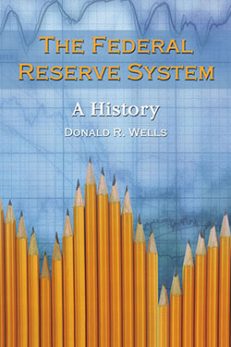The Federal Reserve System
A History
$29.95
In stock
About the Book
The Federal Reserve banking system was created in 1913 in an effort to bring coherence to nationwide banking practices and prevent crises like the financial panic of 1907. Since it began operating in 1914, the Federal Reserve has played a crucial role in determining American financial policy and practice. It is largely an entity unto itself, operating independently, rarely subject to the political machinations of Congress or the presidency. Yet few Americans know how it works, and even fewer know anything of its history.
This history of the Federal Reserve begins by giving an overview of American banking practices before the Federal Reserve’s formation. The events leading to the Reserve’s creation, and its early trials and tribulations, are then documented. Subsequent chapters track the Federal Reserve’s history: its role during times of financial and military crisis, its relationship to each presidential administration, and the Fed’s evolution as its leadership has changed over the years. The history wraps up with the Alan Greenspan era, explaining major changes in the institution’s operating procedures since the 1980s. An appendix lists all members of the Federal Reserve Board of Governors, from its formation until 2003.
About the Author(s)
Bibliographic Details
Donald R. Wells
Format: softcover (6 x 9)
Pages: 224
Bibliographic Info: bibliography, appendices, index
Copyright Date: 2004
pISBN: 978-0-7864-1880-0
eISBN: 978-0-7864-8219-1
Imprint: McFarland
Table of Contents
Table of Contents
Preface 1
1. U.S. Banking before the Federal Reserve 7
2. The Aldrich-Vreeland Act Prevents a Panic in 1914 21
3. Original Uncertainty Regarding Exercise of Fed Authority 25
4. The Federal Reserve’s Role in World War I 29
5. The Discovery of a New Tool for the Federal Reserve 35
6. The Fed in the 1920s 41
7. The Fed in the 1929–1933 Contraction 47
8. Policy Changes in the Roosevelt Administration 61
9. The Fed’s Role in World War II 77
10. The Fed Between World War II and the Korean War 85
11. The Korean War and the Accord with the Treasury 91
12. “Bills Only” as an Act of Independence 97
13. Operation Twist and President Kennedy’s Tax Cut 107
14. Chairman Martin’s Battle with President Johnson Over Inflation 111
15. Nixon Replaces Martin with Burns and Inflicts Price Controls on the Economy 119
16. Supply Shocks in the 1970s Make Unemployment and Inflation Worse 125
17. Carter Replaces Burns with Miller and Inflation Worsens 131
18. The Volcker Era Begins and the Fed Gets Control Over All Banks 137
19. Volcker’s Fed Slows Inflation at a Cost 145
20. Volcker Is Reappointed but There Are Changes on the Board 153
21. The Greenspan Era Begins 161
22. The Fed’s Response to the Thrift Crisis 167
23. Economists Dominate the Board Under Greenspan 173
24. Changes in the Fed’s Operating Procedure after the 1980s 185
Conclusion 193
Appendix A: Membership of the Board of Governors of the Federal Reserve System, 1913–2003 199
Appendix B: Persons Serving as Chairman of the Board of Governors 202
Bibliography 203
Index 211
Book Reviews & Awards
“highly recommended”—Choice; “thorough…essential”—Midwest Book Review; “a fine survey history”—History: Reviews of New Books.





